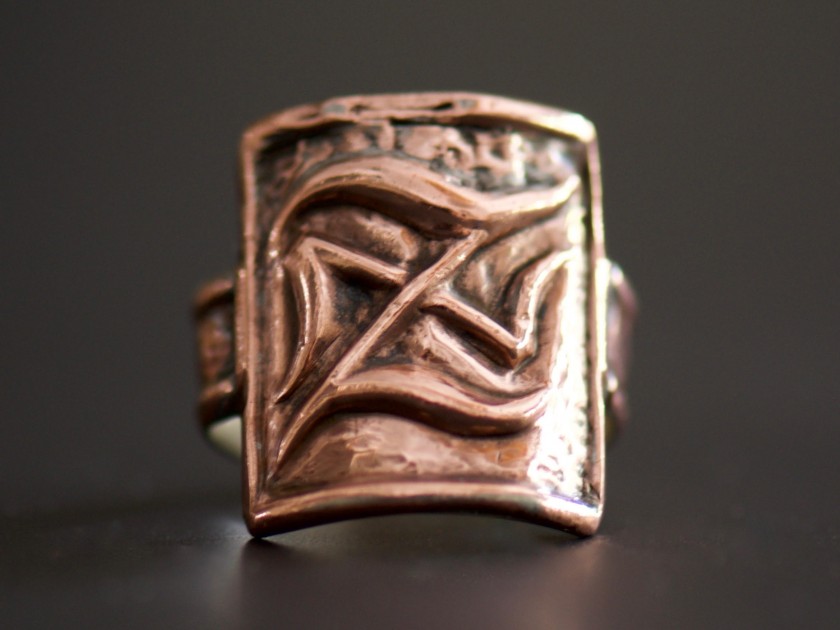
Some objects are obviously beautiful. Aesthetes point at the symmetry, ornateness, or perhaps a certain refinement cultivated during the creative process. This beauty imbues objects with power and often renders them valuable.
I grew up in Venezuela of the 1970s and 1980s, surrounded by aesthetically pleasing things; stunning works of art and my father’s collection of jewelled and delicate watches. At the time, Venezuela was a country filled with promise, joy, vibrancy, and colour. My father and his brother had emigrated from their native Czechoslovakia in the late 1940s. By the time I arrived, any vestige of immigrant hardship had long since disappeared. My father enjoyed huge success as an entrepreneur, philanthropist, and collector. Always engaged in the present, he never spoke of his past.
My parents, like most, were keen to educate me as best they could. Their only child, I attended what seemed like thousands of concerts, ballets, and exhibits in museums all around the world. I sat through hours of Strauss and Stravinsky, ambled through miles of halls observing objects and fine art of all kinds. My exposure to such activities was magnified by my parents’ connection to the arts; artists and thinkers constantly visited our home.
I learned that a perfect balance of craftsmanship, aesthetics, and meaning creates harmony. It imbues something with that elusive quality we call beauty. My father couldn’t walk by a piece of art without expounding on it. In many memories of my childhood, we’re standing in front of paintings and sculptures whispering as my father, who had a brilliant eye, tried to teach me the difference between a daubed canvas and a work of fine art. Eager to please, I strained to understand why Jackson Pollock’s paint splashes were so much better than my own.
Eager to please, I strained to understand why Jackson Pollock’s paint splashes were so much better than my own.
Despite all this exposure to finer things from a young age, the most beautiful object I have today is a coarse copper ring. The base material seems to be a section of pipe that was most likely destined for plumbing. The ring was probably fashioned with a hammer and a nail. It was made by a grandfather I never met in 1943 or 1944 while he was imprisoned by the Nazis in a camp near Prague known as Terezín. The ring emerged from my family’s Czech past that my father kept hidden from me and those close to him.
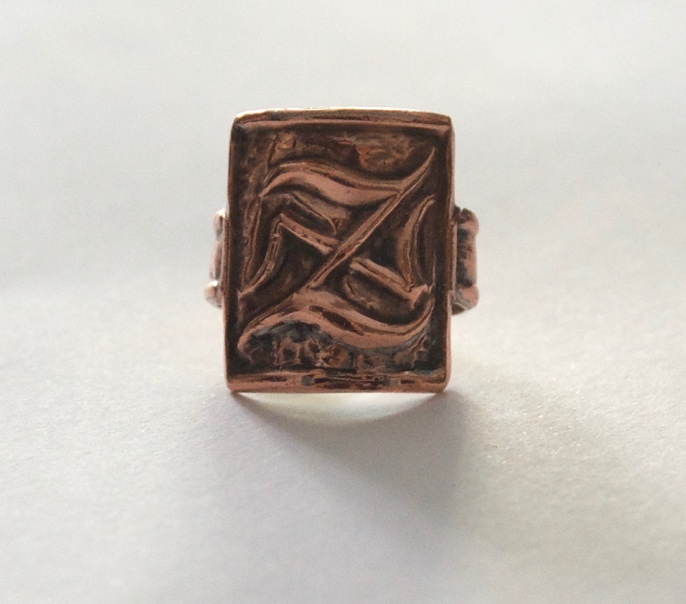
When my father died in 2001, he left me a box of clues to his elusive life during the Second World War. A few years later I began researching his family’s history. I scoured archives, deciphered papers, traced people all around Europe and America, asked questions and uncovered untold stories. When I first found the unusual looking ring, it was just a loose trinket, an apparently unexceptional souvenir in one of the many boxes that made their way to me after I started my inquiries into the past. As I learned more, the ring began to acquire meaning.
Growing up, I knew nothing of my father’s earlier life in Europe. I discovered that my father came from a Jewish family in Prague. My father Hans and his brother Lotar were part of a large, well-to-do, happy family. In the 1920s and 1930s, the Neumanns owned a factory that manufactured paints. When my father turned eighteen in 1939, he was living with his parents Otto and Ella. His older brother Lotar was engaged to Zdenka, a beautiful, clever, and independent young law student who wasn’t herself Jewish. Eventually Lotar and Zdenka married. As Nazism bore down on them and the family was stripped of their possessions, Zdenka’s personal resources offered a temporary lifeline.
I now know that twenty-nine members of my family were sent to camps. Unlike most, my father’s immediate family wasn’t deported together. My grandmother Ella was deported first, in May 1942. Ella’s transport ended up in Sobibor, where all were shot on arrival. It was not until August that the family received news that Ella had collapsed in the transport and had been removed from the wagon and interned in Terezín. The family used every tool at their disposal to send to the camp whatever they could to supplement Ella’s food, keep her warm, and provide her with the currency needed to survive. The supply-chain logistics took time to establish; every link in the chain had to be infallible. Intermediaries had to have a way into the camp and be trustworthy. No one could risk being caught. It took weeks for the family to arrange a workable system, sneaking parcels of contraband in and getting coded, but candid, letters out.
Growing up, I knew nothing of my father’s earlier life in Europe. I discovered that my father came from a Jewish family in Prague.
Zdenka, who’d grown close to Ella and was very bold, was so buoyed by the news that Ella was alive and in Terezín that she determined to enter the camp herself and find her. It was difficult for a gentile to access the camp, but nothing ever seemed impossible to Zdenka. She had, at this point, already spent years shuttling letters, medicines, and currency between the homes of various family members and friends. She’d even helped Lotar obtain a false identity card. But the idea of penetrating the camp established in her a new level of temerity, yet more defiant and dangerous. It could easily have cost her her life.
She asked questions of friends and sought advice from people engaged in resistance. It was difficult and very risky for a gentile to access the camp, but it wasn’t impossible. Zdenka discarded her sleek modern suits and skirts, covered her hair with a handkerchief, found a pair of comfortable walking shoes, and dressed in the plainest clothes on which she could lay her hands. She stitched a yellow star onto her oldest coat. She’d been told there were two options. She should either look like one of the few locals who entered and left Terezín, employed to do laundry and cooking for the SS, or like one of those interned. She chose the latter.
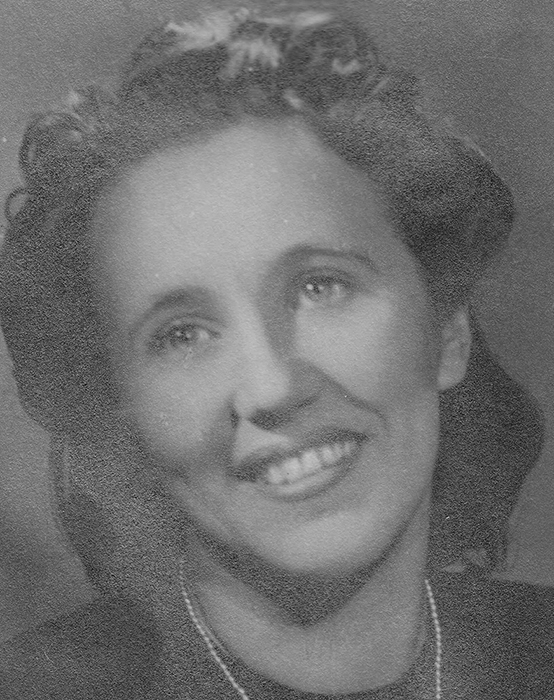
Zdenka
The easiest way in was to go just before noon and meet up with the groups of inmates who worked the fields surrounding Terezín. She’d then walk with them as they headed back into the camp for their midday soup. The town had two main gates that were guarded on rotation by Czech gendarmes and German SS guards.
Yet Terezín was self-administered, and the people responsible for counting inmates in the fields or barracks were Jews. The field workers were led and monitored by a higher-ranking prisoner and usually returned at the time when the SS guards were on their lunch break. They entered via a gate near the gendarmes’ headquarters, which, rumor had it, was patrolled by friendly Czech guards. Chances were that the Jewish inmate in charge of the group of field workers wouldn’t denounce her, so Zdenka needed simply to blend in and avoid any contact with the SS.
She managed to locate the group of buildings that included Ella’s dormitory and workplace. Zdenka knew where to go. She chose a busy weekday and packed an old cloth bag with items that Ella had requested: a black sweater, a wool dress, and a small pot of marmalade. She drove her car to the town of Bohušovice. There she borrowed a bicycle from a contact and cycled the remaining mile to the fortified town of Terezín. When she spotted the country unit of workers in a field, she hid her bicycle in the nearby shed that she’d been told about. She donned her jacket with the star and joined the group in their labours until it was time to go in for their lunch. She walked into Terezín with a large group of inmates who pushed handcarts and lugged tools and sacks of potatoes. As if she entered the camp every day, she brazenly smiled when she walked past a gendarme with his bayonet. I don’t know why they didn’t stop her. Once through the ramparts, she found her way toward the buildings that housed the workshops and eventually reached Ella. Zdenka had a limited amount of time to spare before she had to return to the fields with the agricultural workers headed for the afternoon shift. Otherwise, leaving the camp that day would be impossible.
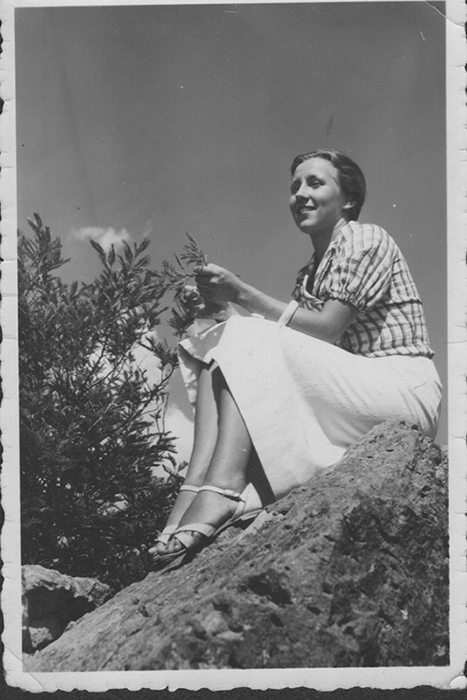
Zdenka
Zdenka’s written recollection paints her bold adventure as an easy feat. The reality is that there are very few historical accounts of people illicitly accessing Terezín.
I traced Zdenka’s daughter in Switzerland and she explained that many years later her elderly mother had written about her encounter with Ella in the camp: Reunited, we touched each other’s hands and faces over and over in disbelief, we held each other and talked and wept. We cried out of joy and sorrow.
Among the hundreds of documents that I’ve amassed, I also have a letter from Ella, addressed to Otto and their sons dated a few days after Zdenka’s visit:
This encounter with my beloved Zdenka has brought me so many beautiful memories and such happiness it has shaken me out of my apathy. Today I am back at work and hopeful once more. I miss you all terribly. I live for you and pray that this will only be a short chapter and will not be in vain.
My grandfather was himself deported to Terezín six months after my grandmother in November 1942. Lotar, Zdenka, and my father Hans, who hadn’t yet received his deportation notice, did whatever they could to ensure that supplies were still smuggled in to their parents in the camp.
I know from various sources that Zdenka took the enormous risk of entering Terezín once more. Understandably, her memoirs dwell on her emotional response to the situation, and it’s not clear precisely when she made the run again. It must have been during the early autumn months of 1943, when getting parcels through was becoming impossible, that Zdenka entered the camp for a second time.
Once more, she dressed like an inmate and tagged along with the country unit working in the nearby fields. She searched for Otto and found him in the Hannover barracks on his shared wooden bunk. She’d stitched hidden pockets into her shirt and skirts, within which she carried tins of shoe polish — to keep Otto’s hair dark to ensure that he looked younger than his fifty-three year —money, and other small items of value. Above all, she brought my grandfather love and, with it, hope.
When you look carefully at the copper pipe ring, you notice that the geometric drawing on the top is composed of two letters juxtaposed and intertwined. They are ZN, Zdenka’s initials. A cousin explained to me that her father, my uncle Lotar, had explained tearfully that Otto had made the ring in Terezín. Grateful to Zdenka for the parcels, for the letters, for what felt like unconditional love, Otto had stolen some metal and modelled it himself. He must have loved Zdenka very much. Perhaps it was during her brave incursion into the camp that a grateful Otto gave her the ring. Maybe he sent it out with one of their trusted couriers. Either way, this simple, essential symbol of gratitude did make it out. It‘s a token of beauty that emerged from the horror there. Zdenka kept it and wore it throughout the war. Afterward, she decided to return it to my family. Decades later, it has made its way to me. It’s the only thing that remains that belonged to my grandfather Otto. When I hold it, as my fingers trace the relief that forms the letters, I imagine my grandfather’s fingers as they worked the copper, determined, desperate, and yet full of love.
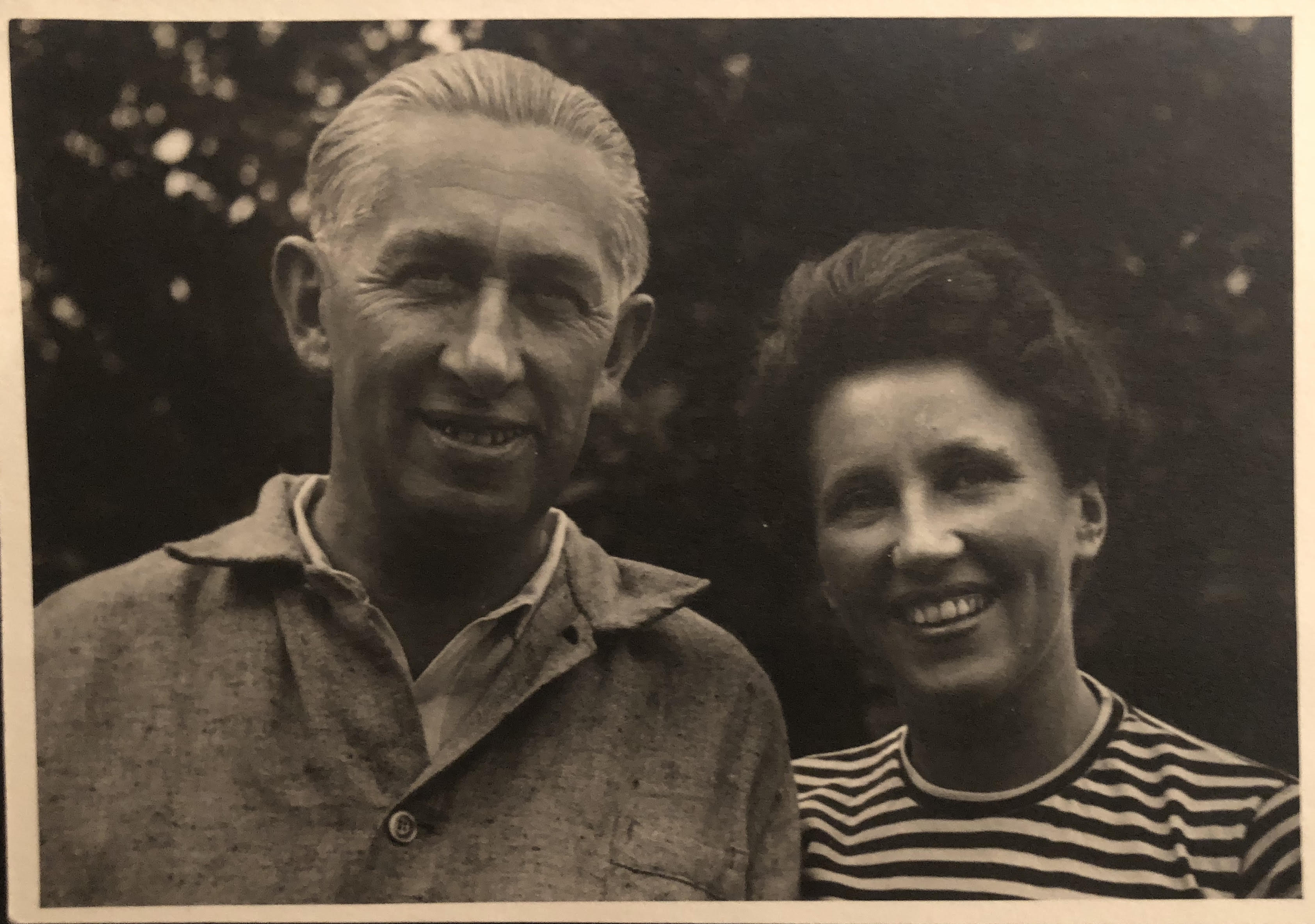
Zdenka and Otto Neumann
Some things are beautiful despite lacking any feature that might appeal to the aesthete. They have a soul, a power, an intrinsic story. You have to look carefully to find the history that shaped the object, because often what is left to us is just a shell, meaningless without its context.
Rings have been used as talismans for centuries. Our mythology abounds with rings that protect or empower the wearer. Jewish legend relates that King Solomon possessed a magical ring that rendered him all-knowing and warded off demons. Enchanted rings still figure large in our popular culture, from Wagner to Tolkien to CS Lewis; rings that are coveted, that spark adventures, that conjure magic, that permit travel between worlds.
This little piece of copper pipe is my talisman. It hangs on a necklace that I wear every day. I’m not sure about superpowers or demons but it serves to remind me of my roots, of my family’s resilience. It acts as anchor and inspiration. It even, every so often, allows me to travel in time.
Above all, it reminds me that the greatest beauty comes from the story within.
Ariana Neumann grew up in Venezuela. She graduated from Tufts University with a degree in history and received her master’s in Spanish and Latin American Literature from New York University, where she taught for a year before moving to the UK, when she obtained a postgraduate degree from the University of London. She previously worked as a foreign correspondent for Venezuela’s The Daily Journal, and her writing has also appeared in The European. She currently lives in London with her family. When Time Stopped is her first book.